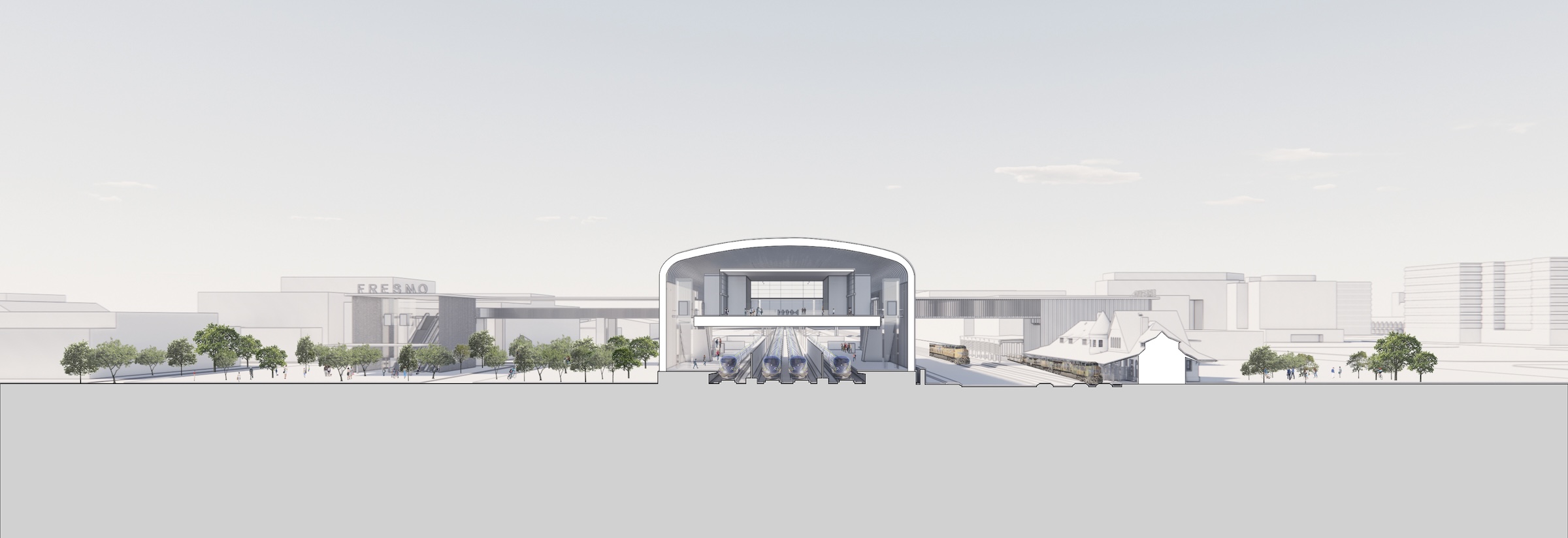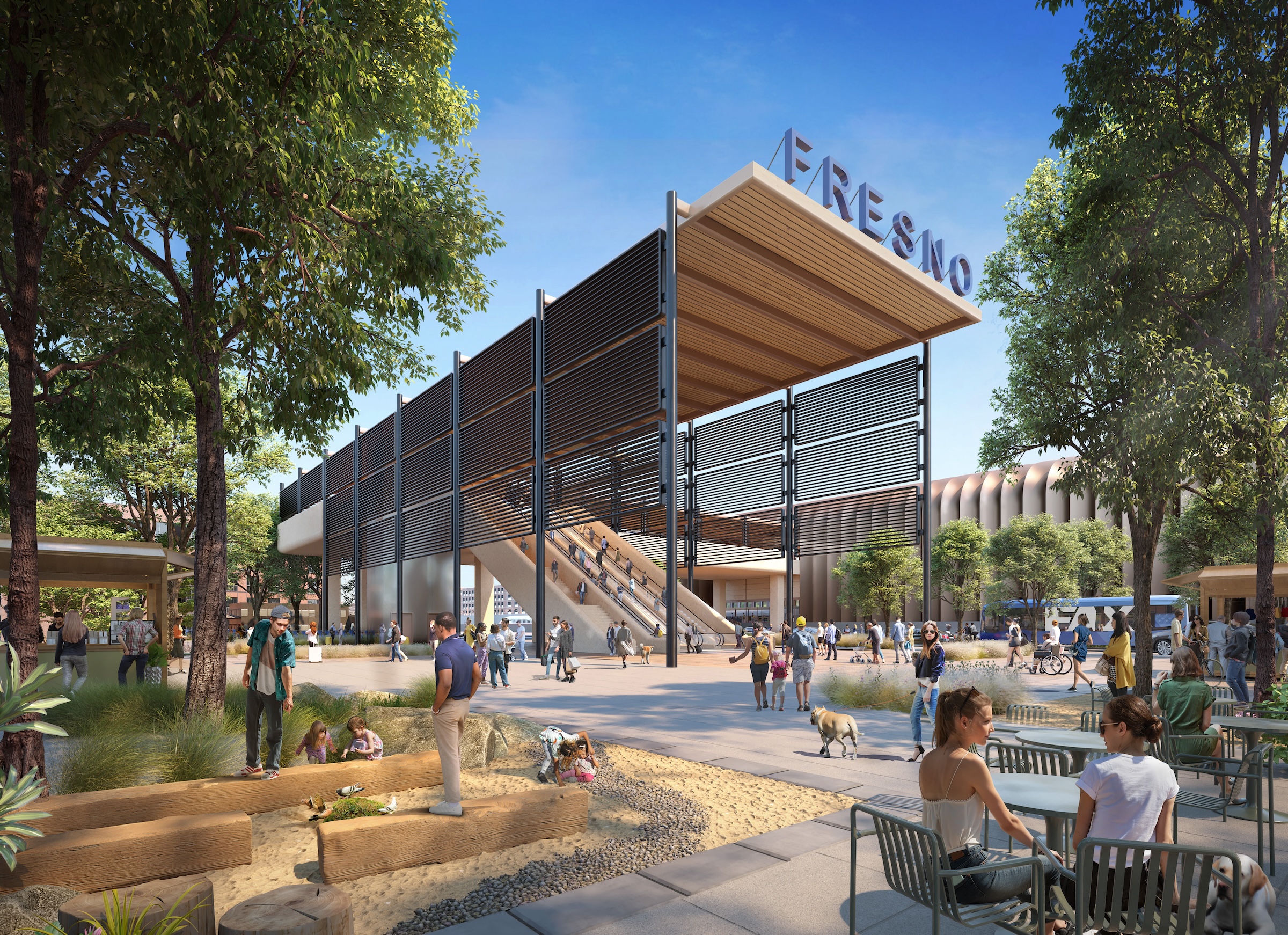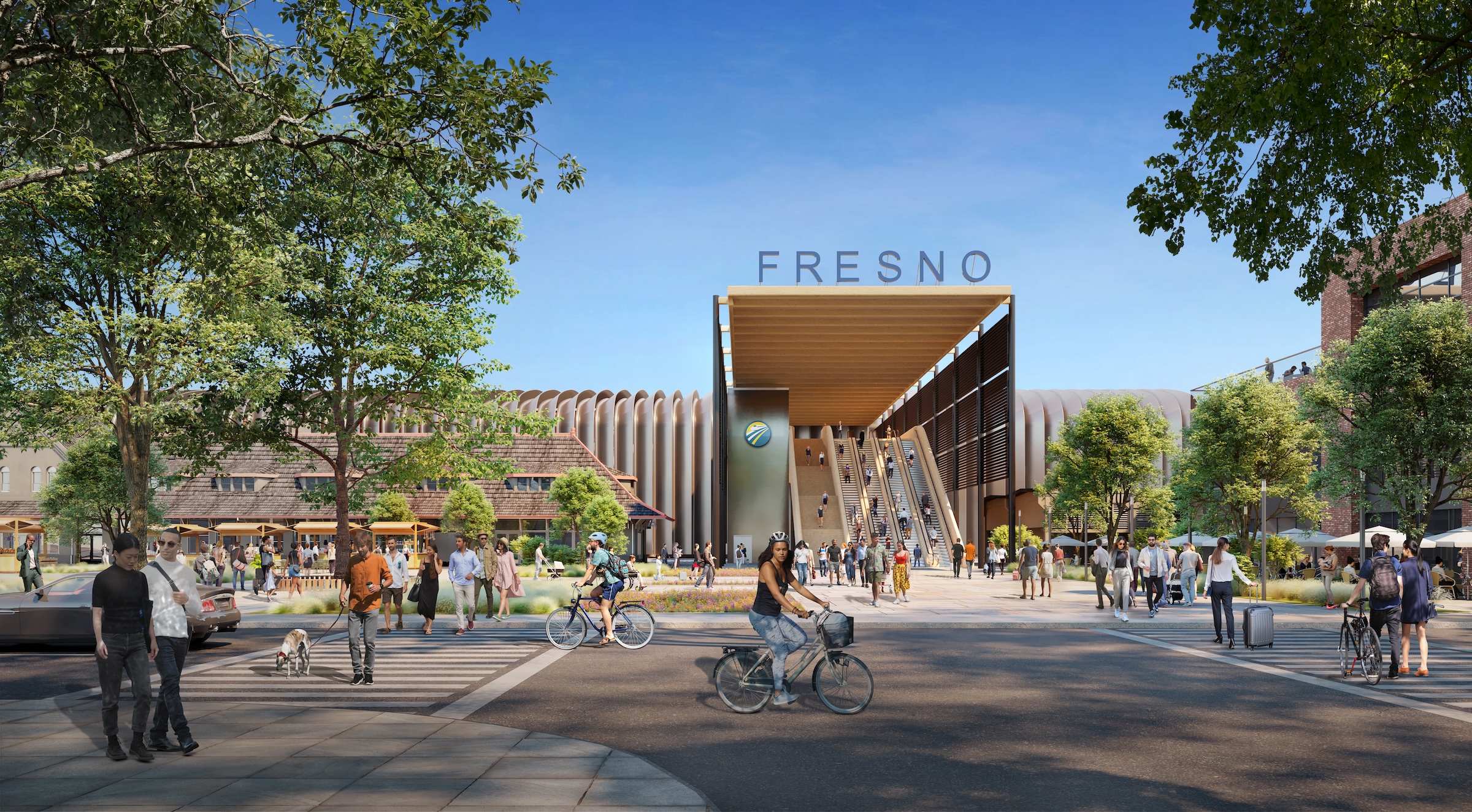A long-shuttered rail station in Fresno, Calif., will be renovated to serve as the city’s high speed rail (HSR) station as part of the California High-Speed Rail Authority system, the nation’s first high speed rail project. California’s HSR system will eventually link more than 800 miles of rail, served by up to 24 stations.
Design firm Page & Turnbull will work on the historic station, with a focus on accessibility updates, upgrades to meet modern fire and life-safety codes and structural and seismic standards, and the rehabilitation of key architectural features of the historic Queen Anne-style depot, built of red brick with a slate bellcast hip-roof and cupolas. Foster + Partners will design a new intermodal station at the site.
The new HSR hub will connect the historic transit depot’s former passenger and freight train stations, as realized through extensive, preliminary site surveys and 3D modeling. Attention to strengthening the buildings’ structural and seismic integrity is a priority, potentially through discrete structural approaches that will preserve the buildings’ original brick walls, such as the integration of obscured concrete columns.
The historic train depot is listed in the National Register of Historic Places. It opened in 1872 as the Central Pacific Railroad station and was later developed into the Southern Pacific Depot, whose service ceased in the early 1970s. The site includes the historic passenger depot, freight depot/railway express agency building, and Pullman Shed.
As a part of the Phase 1, 119-mile Central Valley segment of the California HSR system that also includes Northern and Southern California segments, the 65-mile project section between Merced and Fresno link the Central Valley and Silicon Valley with stations in downtown Fresno and downtown Merced. The Central Valley segment will connect San Francisco to Los Angeles in less than three hours, with service expected to begin in 2027.
When complete, the 800-mile system from Sacramento to San Diego, will include an anticipated 24 HSR stations, with arriving and departing trains travelling at some 200 miles per hour. Phase 1’s 520-mile segment consists of the San Francisco/Merced to Los Angeles/Anaheim section.
Owner and/or developer: California High-Speed Rail Authority
Architect of record for intermodal station: Foster + Partners
Architect of record for historic station: Page & Turnbull
Engineers for intermodal station: Arup




Related Stories
| Jun 30, 2014
Research finds continued growth of design-build throughout United States
New research findings indicate that for the first time more than half of projects above $10 million are being completed through design-build project delivery.
| Jun 30, 2014
Arup's vision of the future of rail: driverless trains, maintenance drones, and automatic freight delivery
In its Future of Rail 2050 report, Arup reveals a vision of the future of rail travel in light of trends such as urban population growth, climate change, and emerging technologies.
| Jun 18, 2014
Arup uses 3D printing to fabricate one-of-a-kind structural steel components
The firm's research shows that 3D printing has the potential to reduce costs, cut waste, and slash the carbon footprint of the construction sector.
| Jun 12, 2014
Austrian university develops 'inflatable' concrete dome method
Constructing a concrete dome is a costly process, but this may change soon. A team from the Vienna University of Technology has developed a method that allows concrete domes to form with the use of air and steel cables instead of expensive, timber supporting structures.
| Jun 6, 2014
Shipping container ship terminal completed in Spain
In Seville, Spain, architectural firms Hombre de Piedra and Buró4 have designed and completed a cruise ship terminal out of used shipping containers.
| Jun 2, 2014
Parking structures group launches LEED-type program for parking garages
The Green Parking Council, an affiliate of the International Parking Institute, has launched the Green Garage Certification program, the parking industry equivalent of LEED certification.
| Jun 2, 2014
SOM unveils plans for Miami transit hub
The elevated station will be a key portal within All Aboard Florida’s rail system, the nation's only privately owned, operated, and financed rail network.
| May 29, 2014
7 cost-effective ways to make U.S. infrastructure more resilient
Moving critical elements to higher ground and designing for longer lifespans are just some of the ways cities and governments can make infrastructure more resilient to natural disasters and climate change, writes Richard Cavallaro, President of Skanska USA Civil.
| May 20, 2014
Kinetic Architecture: New book explores innovations in active façades
The book, co-authored by Arup's Russell Fortmeyer, illustrates the various ways architects, consultants, and engineers approach energy and comfort by manipulating air, water, and light through the layers of passive and active building envelope systems.
| May 19, 2014
What can architects learn from nature’s 3.8 billion years of experience?
In a new report, HOK and Biomimicry 3.8 partnered to study how lessons from the temperate broadleaf forest biome, which houses many of the world’s largest population centers, can inform the design of the built environment.

















